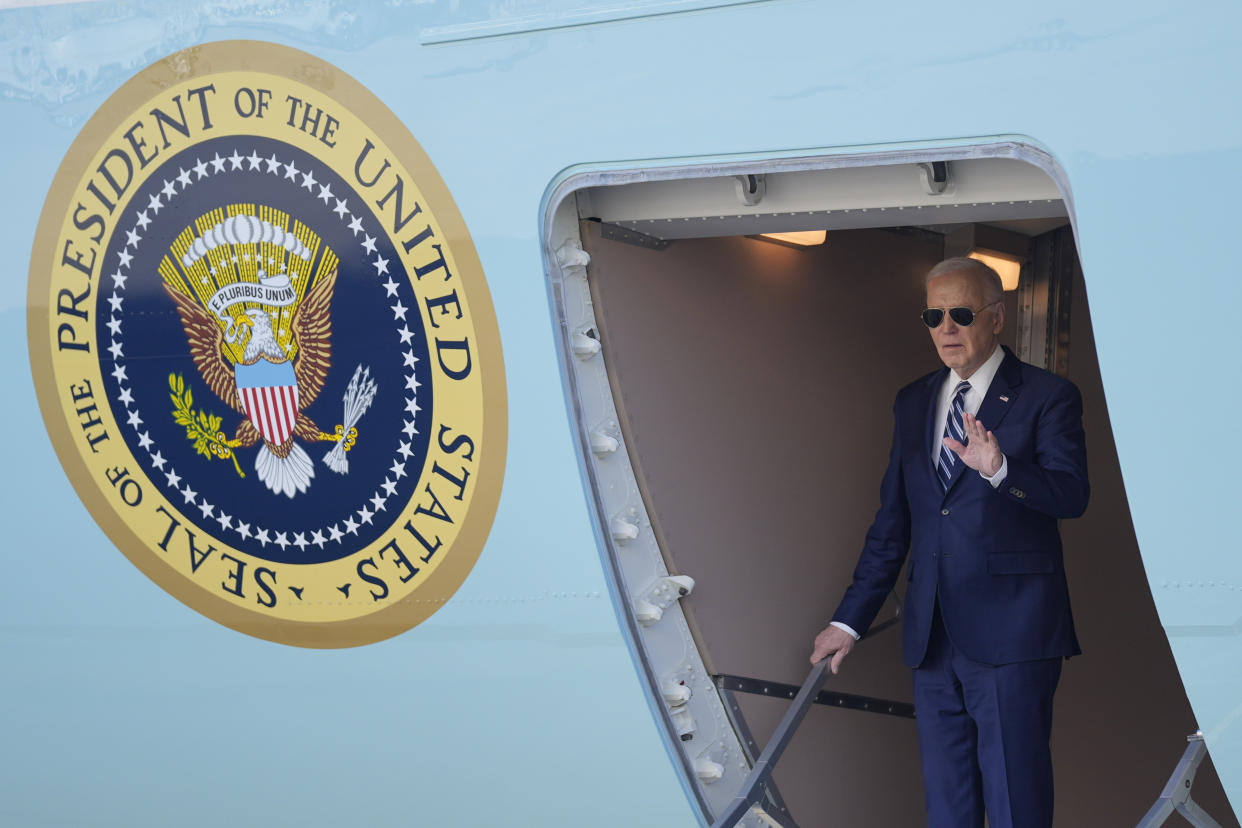This week in Bidenomics: Inflation staycation
Everybody wants inflation to get lost. For a while, it looked hopeful. But we can’t quite slam the door on the bugger.
April 26 brought the latest of several signs that inflation is reasserting itself. Personal Consumption Expenditures, an inflationary measure the Federal Reserve watches closely, showed annualized inflation of 2.8% in March, slightly higher than expected. The Consumer Price Index, another key indicator, rose during the last two months and now shows inflation at 3.5%.
Inflation peaked at 9% in June 2022, then fell sharply for a year, reaching a cycle low of 3.1% in June 2023. That seemed promising for President Biden’s reelection prospects; the worst economic scourge of his presidency seemed to be quickly disappearing.
But it didn’t disappear. Inflation has banged around in the low 3% range for the last nine months, well above the Federal Reserve’s target of 2%. Stubborn inflation has important implications for the rest of 2024.
Had inflation continued to fall through the end of 2023 and into 2024, it would basically be at normal levels by now. At the start of 2024, investors thought it very likely that tamed inflation would let the Fed start cutting interest rates in the first half of the year, bringing a bit of relief to car and home buyers financing their purchases with loans. Now it looks like no help on rates is coming until the fall, at the earliest, and maybe not until after the elections in November.
Biden could have worse problems. Inflation is sticking around because consumers are generally in good shape and willing to spend money. That keeps demand strong and prices taut. Economic output grew by a 1.6% annualized rate in the first quarter, which was weaker than expected but still positive. And that followed unsustainably large GDP growth during the second half of 2024.
Goldman Sachs was impressed enough by the economic news to set its target for second quarter GDP growth at a robust 3.5%. Some election models say solid economic growth in the second quarter of an election year almost always corresponds with reelection for an incumbent president seeking a second term.
Biden’s prospects are murkier. Most economists still think the latest spurt of inflation will abate before long. Two categories are driving most of the inflation we have at this point: auto insurance and rents. Insurance costs will eventually stabilize, and the calculation for rent inflation overstates reality a bit because it undercounts people signing new leases for less. There’s basically no inflation in goods anymore, and some products are starting to get cheaper.
Read more: Tips for getting cheap car insurance in 2024
Drop Rick Newman a note, follow him on Twitter, or sign up for his newsletter.
But the Fed has made clear it’s not going to cut interest rates until it’s really sure inflation is gone. And it’s not gone yet. So rates are likely to stay where they are for several more months and potentially through Election Day in November.
Interest rates aren’t at historic highs. They’re actually closer to historic norms. But they’re a lot higher than they’ve been in recent times, and that’s many people’s basis for comparison when they ask if they’re better off under Biden.

Headlines like this certainly don’t help the president: "Mortgage rates hit new highs." Or this one: “The cost of buying a home has hit an all-time high.” That’s due to a combination of high home values and relatively high financing costs, according to a recent report from Redfin. That kind of hurdle makes Americans skeptical that the economy is really as good as growth or employment data say it is.
Fading rate-cut hopes have also disrupted a boisterous stock market rally that began last October. The S&P 500 (^GSPC) hit new highs in March but has since fallen back by about 3% as bond rates have risen. Stocks have been tumbling on signs of sticky inflation, then jumping back up again as investors think maybe it won’t be all that bad. The stock market doesn’t really predict who will win the presidency, but rising stocks do make a lot of Americans feel better off.
The question for Biden is where will the fight against inflation be in September and October, when the final fence-sitting voters in a tight race are deciding whom to back or whether to vote in the first place. The earliest chance for a Fed rate hike now appears to be September. If it doesn’t happen then, it won’t happen until after the election.
Biden may not need the help of Fed rate cuts. Interest rates could tick down on their own if optimistic investors once again think rate cuts are coming and price in future Fed action. Stocks could keep rising if corporate earnings remain solid and the Fed just stands pat.
What Biden probably does need is for most voters to feel confident that inflation is gone for good. And it’s not … quite … yet. The persistent and unwelcome visitor may still wreak a bit of mischief.
Rick Newman is a senior columnist for Yahoo Finance. Follow him on Twitter at @rickjnewman.
Read the latest financial and business news from Yahoo Finance
